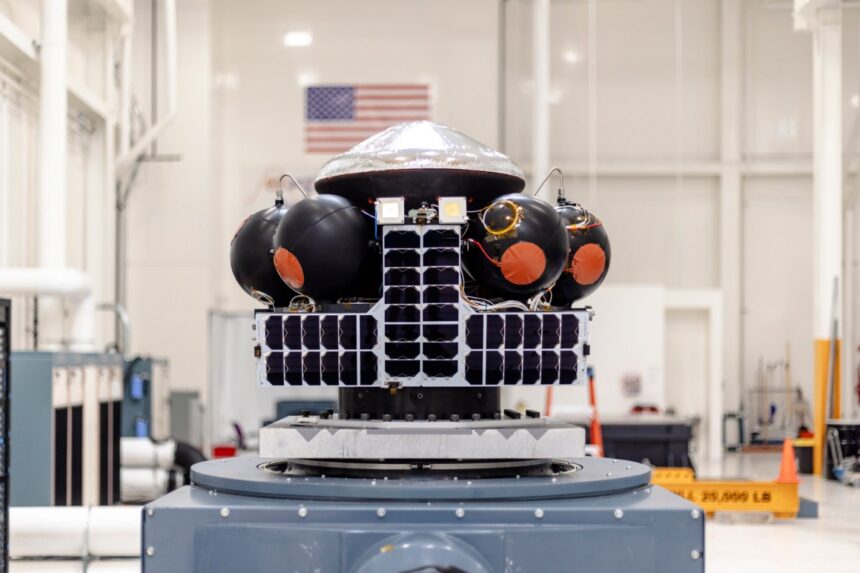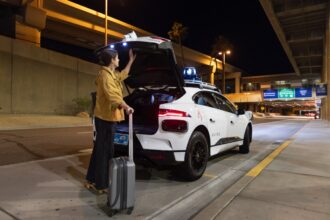Inversion Space has become the third company to receive a spacecraft reentry license from the Federal Aviation Administration, paving the way for the startup to launch and return its tech pathfinder mission for orbital delivery later this year.
The three-year-old startup has ambitions of transforming space into a new “transportation layer for Earth” using ultra-fast, on-demand cargo deliveries to anywhere on Earth from orbit. The Ray vehicle is the first hardware Inversion will be sending to space. Mounted on an oven-sized bus, the actual Ray capsule is only about twice the size of a Frisbee — much smaller than the company’s full-scale spacecraft. But the mission will still put much of the final tech to the test.
According to a draft environmental assessment (EA) of Inversion’s plans released by the FAA in May, the aluminum Ray capsule “contains and is intended to test and demonstrate many of Inversion’s custom developed systems that allow for a decreased cost and increased cadence of reentry space capsules.”
The FAA’s Office of Commercial Space Transportation issued the vehicle operator license for Inversion’s Ray under new Part 450 regulations designed to modernize spacecraft licensing. It joins SpaceX and Varda on the short list of operators with approval to reenter spacecraft, though only Varda was also approved under Part 450 regs. The new regulatory framework was finalized in 2020 to streamline the licensing process for satellite and rocket operators, though there have been a fair number of critics that question whether Part 450 has achieved that goal. The licensing process for Inversion’s Ray took 18 months, a spokesperson said.
The new license gives Inversion a green light to return the Ray capsule back to Earth for a splashdown in the Pacific Ocean off the coast of California. Ray, which will launch on SpaceX’s Transport-12 ride-share mission (likely sometime this month), will spend between one to five weeks in space, Inversion CEO Justin Fiaschetti said in a previous interview with TechCrunch.
The reentry would occur in two-stages, the EA says: first, the capsule would deploy a drogue parachute when Ray is traveling at around Mach 2 and help the capsule decelerate from supersonic speed. When the capsule is around 6,000 feet above sea level, the main parachute will deploy, and the capsule will slow to 15.5 miles per hour to splash down.
The craft will then activate a recovery buoy that will broadcast the capsule’s location to Inversion’s mission control center, and a team will go recover the 41-pound capsule from the water.
Following the Ray demonstration missions, Inversion plans to introduce a larger vehicle named Arc and launch that as early as 2026, though this will require a separate license.






